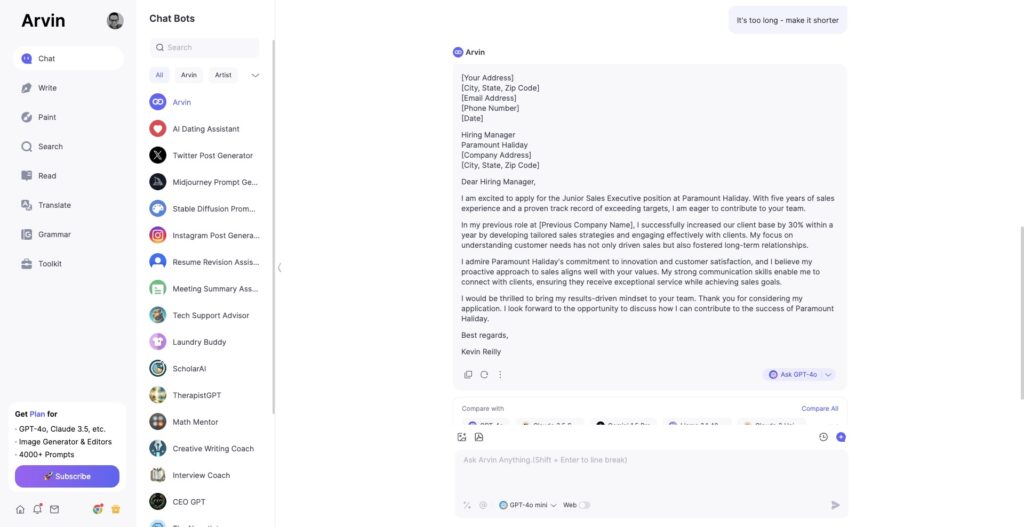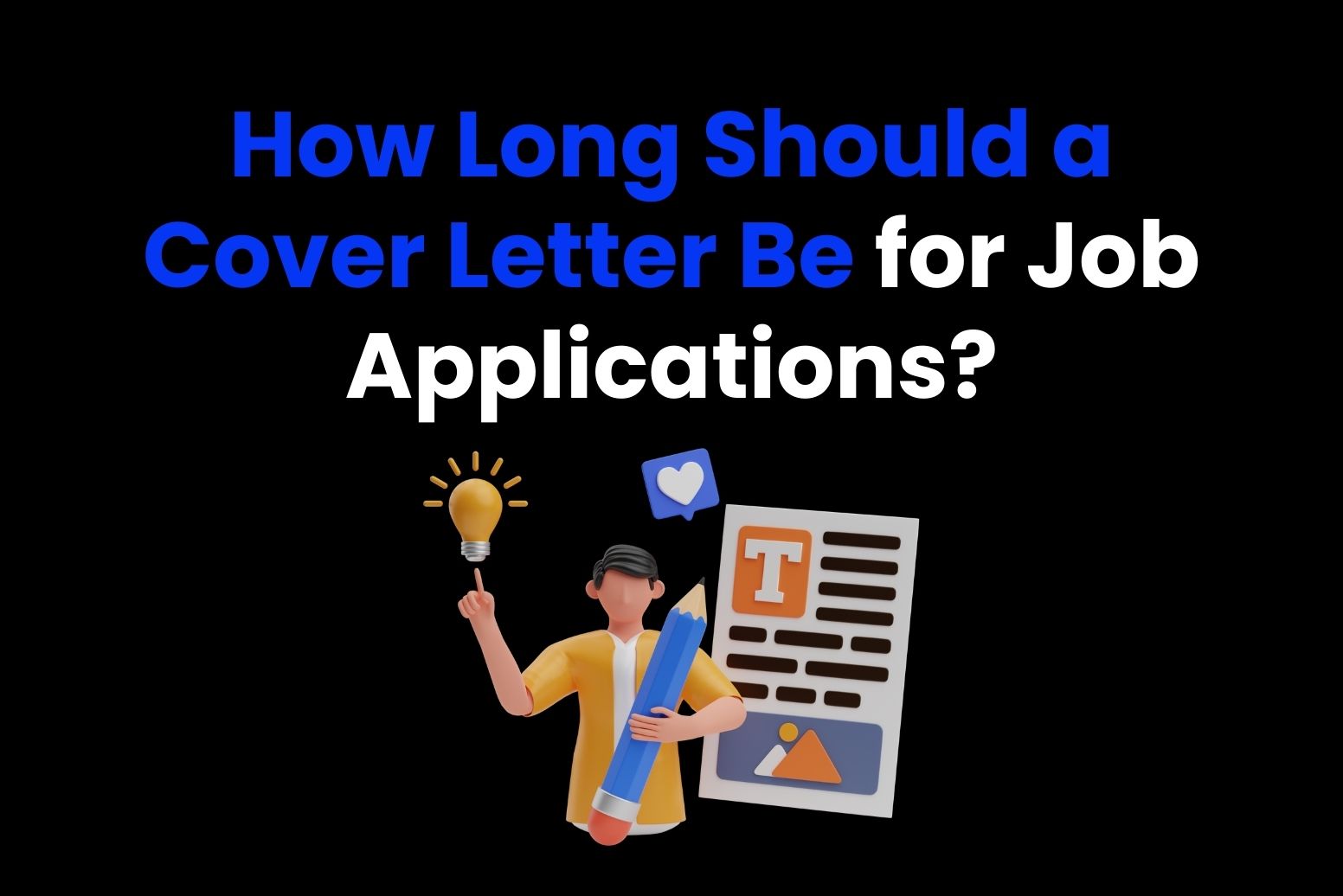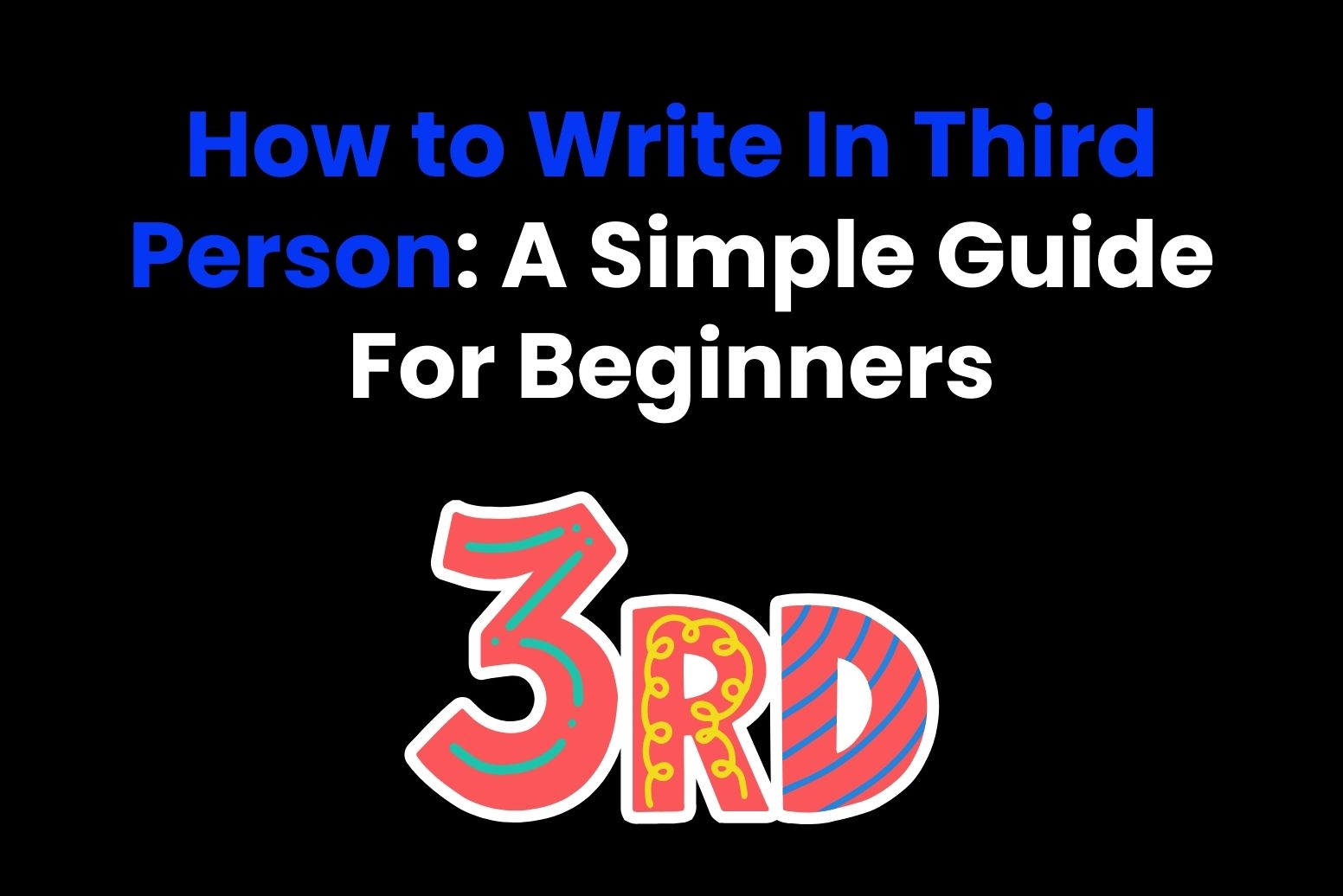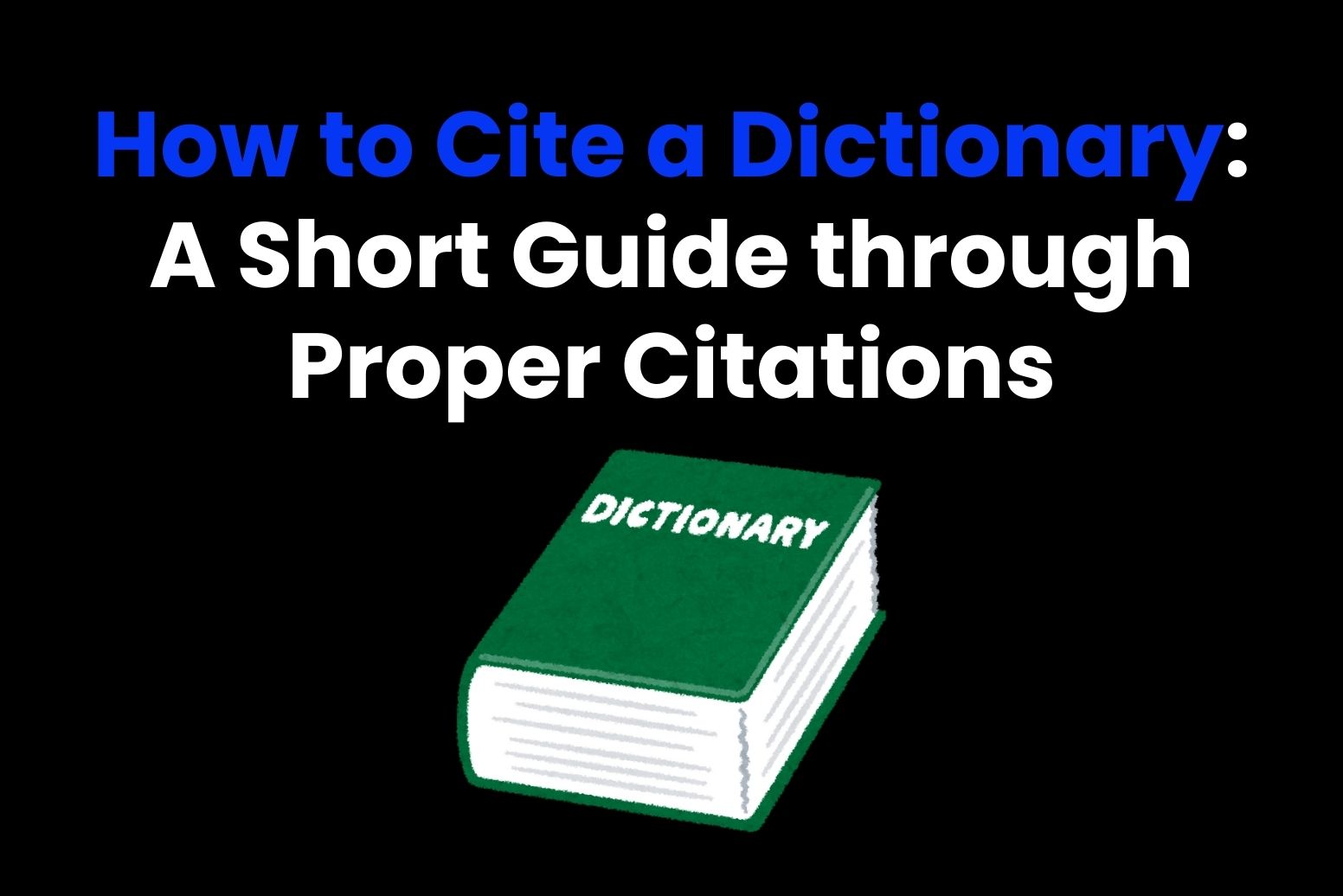How long should a cover letter be? Ideally between 250 and 50 words – read on to find out tips for writing the best cover letter.
The job market is tough. Recent research shows that, in the US, if you apply for between 21 and 80 jobs, you have a 30% chance of receiving an offer.
To boost your chances of landing an interview and receiving an offer, your CV and cover letter should be on point. Make sure your CV is up to date, and your cover letter is personalized.
In this article, we answer the question, how long should a cover letter be? After all, a letter that’s too short won’t do enough to convince the hiring manager. A letter that’s too long will likely be ignored. So, you need to get the balance right.
We also reveal how to structure and write the ideal cover letter for a job application and provide some top tips to improve your interview chances.
How long should a cover letter be?

The ideal cover letter length is between 250 and 500 words. With a standard typeface and size 11 font, this should be no more than one page.
Why does the length matter?
In fact, research shows that approximately 118 applicants apply for every new job listed online. This highlights how competitive the job market is and why you need to take your CV and cover letter seriously.
What is a cover letter?
Before we run through the ideal structure, we need to remind you what a cover letter is. It’s a document that you should send to a potential employer alongside your CV.
It enables you to emphasize key aspects of your employment history, which make you the perfect candidate for the job in question.
You can also use your CV as the perfect opportunity to differentiate yourself from other candidates. For instance, you might have received an award for your work or achieved incredible numbers that the hiring manager will understand.
You should not use your cover letter to repeat things you have already included in your CV. Equally, it’s not a good idea to provide a comprehensive overview of your entire employment history.
Therefore, you need to strike the right balance to ensure your cover letter is the optimal length, covering all necessary details.
The ideal structure for your cover letter
So, what should you include in your cover letter for the best chance of landing a job? Here are the sections you must include:
Section 1: Address & contact details (50 words)
In the top-right corner of your cover letter, include your home address, email address, and phone number. This makes it easy for the hiring manager to contact you for an interview. Then, below the address, include today’s date in the center of the page.
Section 2: Greeting & salutation (5 words)
The way you greet a hiring manager in a cover letter will make a huge difference to the readability of your letter. Therefore, you must get the tone right.
For a generic cover letter, you can use “to whom it may concern” or “Dear Sir/Madam.” However, generic cover letters are much less likely to land you an interview than a personalized letter.
As such, we recommend researching the name of the hiring manager and including it in the letter. Begin with “Dear” and be as formal as possible, opting for “Mr/Mrs [surname]” rather than using their first name.
Example
Dear Mrs Smith.
Section 3: Introduction (100-150 words)
The introduction is your opportunity to make a lasting first impression. To capture the hiring manager’s attention for the right reasons, it should be relevant to the job in question.
You should specify what job you’re applying for and why. Then, add a strong sentence that highlights your abilities and experience and proves why you’re a good fit for the company.
Example
My name is Kevin Reilly. I am applying for the position of Junior Sales Executive at Paramount Haliday. I have worked in B2B technology sales for 5 years, and feel my skills & experience are extremely well suited to the role in question.
Starting as a commission-based salesperson, I was promoted into a team leader role and then sales executive in my current company due to the numbers I have brought in and my ability to motivate others to achieve their goals.
Section 3: Supporting statement (100-150 words)
After introducing yourself, you should spend the next section of the cover letter backing up your credentials. You can look at this as a supporting statement, showing why you’re a suitable candidate.
Be as specific as possible here, highlighting how your previous experiences can help the company. You might also tie in some details you know about the company that shows you have done your research.
Example
Over the last two years, I have surpassed my annual sales targets by over 300%, while leading the highest-grossing team in the company, billing over $1,000,000 in revenue. I know what it takes to finalize a sale and would love to bring my drive to Paramount Haliday.
I’m excited by the company’s growth aspirations and feel that I could really help get sales off the ground in Tulsa following the new branch’s opening. I have worked in Tulsa for several years and know the tech industry well. I believe this would help me develop new relationships for Paramount Haliday and drive sales from my current network.
Section 4: Closing and thanks (50 words)
The best cover letters pre-emptively thank hiring managers for considering their applications. While this might seem like an unusual step, it shows politeness and decency. You don’t need to go overboard with gratitude, but showing thanks is a simple and easy way to bring a cover letter to a close.
Example
I’m really keen to discuss the opportunity at Paramount Haliday in more detail and would love to be considered for an interview. I thank you for taking the time to consider my application and I look forward to hearing from you in due course.
Section 5: Closing greeting/salutation (20 words)
The optimal way to close a cover letter is with a formal salutation. If you have addressed the letter to a specific person, you should close with “Yours sincerely.”
However, if you have sent a “to whom it may concern” letter or addressed the letter “Dear Sir/Madam,” you can close with “Yours faithfully.”
If you want something a little less formal, you can try “Kind regards” or “Best regards.”
You should then follow the salutation with your full name and a signature. Taking the time to sign the letter by hand will help your application stand out from the crowd.
Finish by typing your full name and include your phone number and email address again below the signature.
Example
Yours Sincerely,
[Signed]
Kevin Reilly.
[Phone & Email]
Don’t forget to proofread
After bringing your cover letter to a close, spend a few minutes proofreading it. You should also run a full grammar and spelling check to pick up on any mistakes.
You can use our free AI Grammar Checker, which is the ideal way to identify and rectify mistakes that could hamper your chances of landing a job interview.
Tips for writing a perfect cover letter

As well as getting the length right, you also need to think about how else to stand out. Here are some top tips to consider when writing it:
Personalize the letter
Some people send generic cover letters for numerous jobs and hope for the best. But this scattergun approach almost certainly won’t pay dividends.
With over 100 applications for every job, you need to stand out for the right reasons. Taking the time to research the company and adding a personal touch can make a big difference.
At the very least, find out the hiring manager’s name and spell it correctly. You can also do some company research, which you can include in your letter to aid your interview chances.
Refer to the job description & advert
When writing a cover letter, you should refer to the job description and advert to ensure you cover the required bases.
There’s little point in mentioning that you have a specific skill or area of expertise if it’s irrelevant to the job you’re applying for.
Before writing, pick out some key skills that you know will be relevant to the job in question. Then, refer back to the job description and advert after writing and check you’ve included them in your letter.
Avoid repeating your CV
We’ve mentioned this already, but you must avoid merely repeating your CV when writing a cover letter. This is a mistake that so many job applicants make.
The hiring manager will have your CV and cover letter when considering your application. Therefore, you don’t need to repeat yourself.
Rather, use the cover letter to emphasize aspects of your career that are relevant to the job and company. You can also bring in achievements or awards that you may not explicitly mention in your CV.
Be clear and concise
Remember, your cover letter should be between 250 and 500 words. This means you need to be concise and to the point when writing it.
Remove fluff and filler content, and make sure that every word counts. You should use formal, correct English and avoid slang and colloquialisms where possible.
Make it easy to read and concise, and the hiring manager will be able to see how it relates to the job you’re applying for.
Ask Arvin to generate a cover letter for you
If you’re unsure of how to begin, you can ask Arvin to write one for you. Make sure you provide a good and specific prompt to get the best cover letter for your needs.
Using my example above, I asked Arvin to generate a cover letter on my behalf. My prompt was simple:
- Help me write a cover letter for a Junior Sales Executive Job at Paramount Haliday.
- My Name: Kevin Reilly
- My experience: 5 years in sales jobs
- Max word count is 500
I actually didn’t like the original piece, as I thought it was too long. I asked Arvin to shorten it and was happy with the example below:

With some simple personalization, I think the cover letter would work really well. It shows that you can use Arvin AI to generate one in seconds, enabling you to apply for more jobs to boost your employment chances.
FAQs
Is a 500-word cover letter too long?
500 words is about the maximum your cover letter should be. If it is 500 words, spend some time reading through it to see if there’s any information you can remove to make it more concise. Remember not to repeat any information that’s already in your CV.
What is the best length for a cover letter?
The ideal length for a cover letter is between 250 and 500 words. Anything shorter than this won’t cover enough information. If your letter is longer than 500 words, the hiring manager probably won’t read it.
Is it okay if my cover letter is two pages?
No, it should only be half a page to one page in length. If your cover letter is several pages long, you need to revise it.
Is 250 words enough for a cover letter?
Yes, 250 words is enough. But you can go up to 500 words if you want to elaborate on any points.






